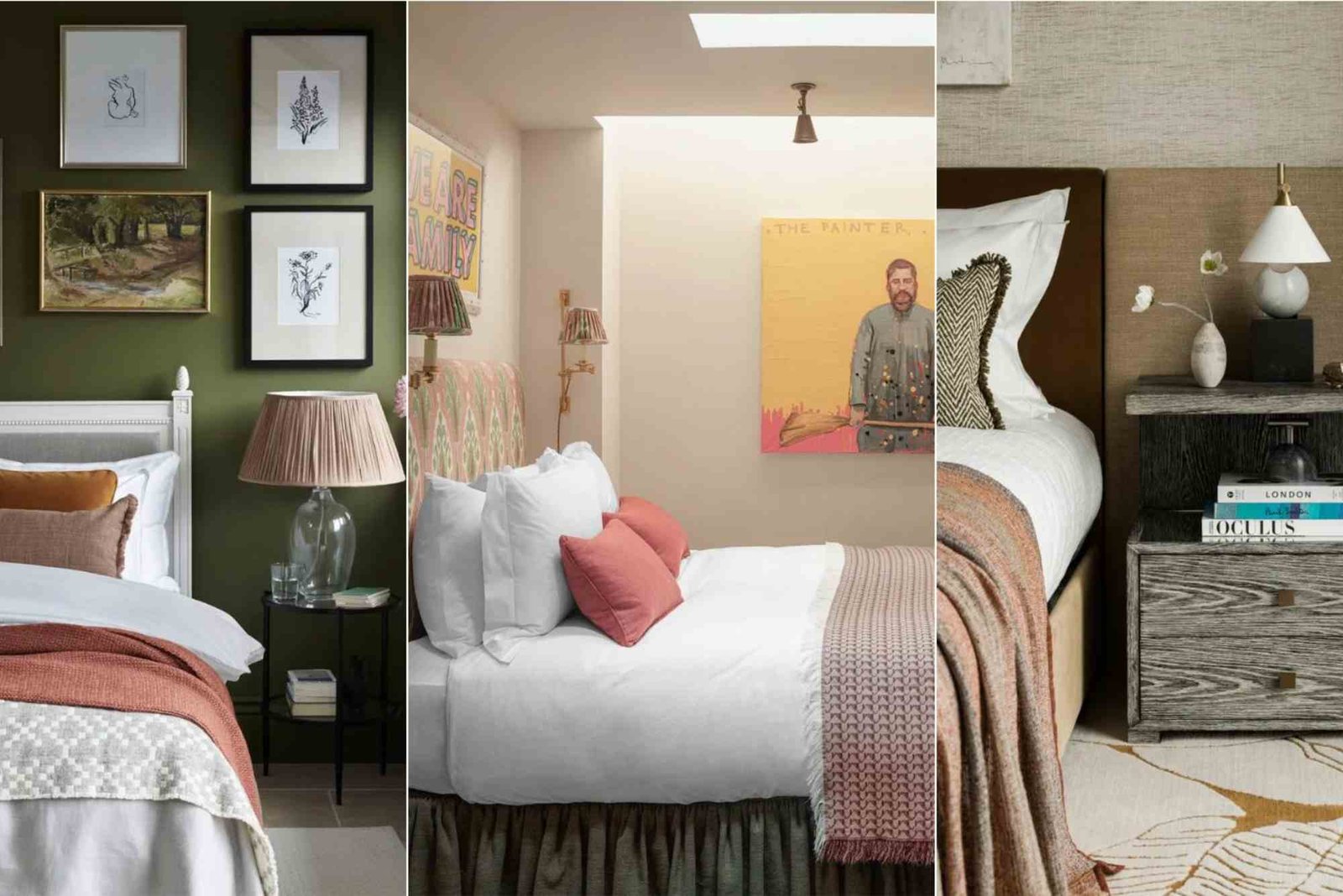Introduction
Creating a perfect bedroom when you stitch your own furnishings or décor isn’t just about sewing—it’s about style, function, and creativity. Whether you’re designing from scratch or upgrading an existing space, understanding the essential steps to bedroom when stitch helps you achieve a warm, cohesive, and personalized look. A thoughtfully stitched bedroom can reflect your personality, offer comfort, and even enhance relaxation.
In this guide, we’ll explore how to plan, design, and execute the best strategies to bedroom when stitch, ensuring your space looks both elegant and inviting.
Understanding the Concept of Bedroom Stitch Design
A bedroom stitch room is a space where handcrafted elements, fabrics, and stitching details bring texture and personality. Stitching can be part of the décor—like stitched curtains, quilts, and pillow covers—or an integral part of the design process when customizing your furniture and accessories.
Stitching isn’t merely functional; it’s expressive. It allows homeowners to blend comfort with creativity, resulting in a space that feels uniquely theirs.
Plan Your Bedroom Stitch Theme
Before diving into fabrics or thread colors, identify the core theme of your bedroom stitch project. Your theme defines the visual direction and ensures harmony across all stitched elements.
A bedroom stitch room may follow themes such as minimalist, bohemian, or modern rustic. Each theme guides fabric choice, color palette, and even stitch style. For instance, bohemian bedrooms often feature patchwork quilts and vibrant, contrasting threads, while minimalist rooms focus on subtle, clean stitching and neutral tones.
When planning, consider how your stitched pieces will align with lighting, wall textures, and existing furniture. You can learn more about bedroom stitch room design inspirations to explore modern and traditional aesthetics.
Select the Right Fabric and Material
The material you choose determines the comfort, longevity, and aesthetic appeal of your bedroom stitch setup. Cotton and linen are popular for their breathability, while velvet and silk add luxury and depth. Choose fabrics that match the intended purpose—soft for bedding, structured for upholstery.
When designing curtains, bedding, or cushions, think about texture balance. If your room already has hard surfaces like wooden floors or metal frames, softer stitched fabrics can introduce warmth and contrast. Opt for high-quality threads and reinforce seams to enhance durability.
Choose the Perfect Color Palette
Colors play a major role in defining mood. When stitching for your bedroom, decide whether you want a calm retreat or a vibrant space. Neutral tones like beige, cream, and gray evoke peace, while rich jewel tones bring drama and sophistication.
Always stitch test swatches before finalizing. Light can alter color perception, so observe your fabric under natural and artificial lighting. For best results, choose two to three primary shades and one accent color that ties the whole look together.
Measure and Prepare Your Space
Accurate measurement is crucial when stitching for your bedroom. Measure bed dimensions, window heights, and wall lengths before starting. This prevents material wastage and ensures precision in curtain draping, bed covers, and upholstery fits.
Use a design sketch or digital layout to visualize where stitched elements will go. Keep proportion and balance in mind—oversized patterns can overwhelm small rooms, while small-scale stitching might get lost in large spaces.
Stitch with Purpose and Style
The stitching technique itself influences the final look. Decorative stitches like cross-stitch, quilting, and embroidery add depth, while straight stitching maintains a sleek, tailored look. Mixing techniques can create visual interest, but keep them cohesive.
Focus on symmetry and alignment. A beautifully stitched duvet or headboard adds elegance and craftsmanship. For added charm, introduce handcrafted details like embroidered initials or patterned seams that personalize your bedroom.
This is where your Stitch Room Design comes alive—every thread tells a story, and every detail contributes to your comfort.
Combine Functionality with Comfort
A successful bedroom stitch room blends function with comfort. While aesthetic appeal is important, every stitched element should serve a purpose. Quilted bedspreads should provide warmth; stitched curtains should filter light efficiently.
Ergonomics also matter—arrange stitched cushions, throws, and rugs in ways that make daily use enjoyable. A well-stitched headboard, for example, not only looks elegant but supports relaxation and reading comfort.
Add Personalized Stitch Details
Personal touches elevate your bedroom stitch design. Add monograms, patterns inspired by culture, or custom embroidery that reflects your story. Personalized stitching transforms your bedroom from a generic space into a meaningful sanctuary.
These little details make your stitched bedroom one-of-a-kind. Handmade curtains with unique stitching borders or custom pillowcases stitched in contrasting threads show craftsmanship and creativity.
Maintain and Care for Your Stitched Bedroom
A beautiful stitched bedroom requires maintenance. Wash fabrics with care, avoid harsh detergents, and inspect seams periodically. Proper care extends the life of your stitched décor and keeps your bedroom looking fresh.
Rotate bed linens seasonally and store stitched items in cool, dry spaces. A little regular upkeep ensures your handmade creations retain their beauty and function for years.
The Aesthetic and Emotional Value of a Bedroom When Stitch
Beyond aesthetics, a stitched bedroom carries emotional weight. Hand-stitching adds a sense of ownership and mindfulness. It’s a process that connects you to your space, turning your bedroom into a reflection of your personality and effort.
Each piece becomes a memory—a stitched quilt can represent family warmth, and an embroidered pillow can mark creativity. This emotional connection is why Bedroom Stitch Room designs remain timeless and meaningful.
Common Mistakes to Avoid
Many enthusiasts rush into stitching projects without preparation. Avoid these common mistakes:
-
Choosing fabrics that clash with existing textures
-
Ignoring lighting when selecting colors
-
Overusing decorative stitches, creating visual clutter
-
Forgetting proportion and measurement accuracy
By staying mindful of these details, you ensure your stitch room remains balanced and elegant.
Expert Tips for Perfect Bedroom Stitch Design
Experts recommend mixing hand-stitched and machine-stitched pieces for a refined look. Hand stitching offers charm and character, while machine stitching provides uniformity and speed. Layer textures—combine smooth fabrics with knits or weaves—to create depth and warmth.
Keep your stitched décor seasonal. Light cotton fabrics for summer and heavier quilted layers for winter make your bedroom adaptable and stylish all year.
Crafting Your Perfect Bedroom Stitch Room
Designing your bedroom when stitch is about balance—between beauty and comfort, tradition and innovation. Each thread, seam, and pattern contributes to the soul of your space. Whether you’re a DIY enthusiast or a professional designer, mastering these essential steps will help you create a space that feels authentically yours.
Your journey doesn’t end here—learn more about bedroom stitch room ideas and inspiration to transform your space with purpose and passion.
FAQs
What is a bedroom stitch room?
A bedroom stitch room is a space where stitched or handcrafted elements—like quilts, curtains, and cushions—define the décor, adding comfort and personality.
How do I choose fabrics for bedroom stitching?
Opt for breathable fabrics like cotton or linen for everyday use and luxurious materials like velvet or silk for decorative accents.
Can stitching improve bedroom design?
Yes, stitching enhances visual appeal, texture, and comfort. It also allows customization, making your bedroom more personal and unique.
What color palette works best for bedroom stitch design?
Neutral and pastel tones create a calm ambiance, while bold hues can highlight creativity and make stitched designs stand out.
How often should I maintain stitched décor?
Regular maintenance—washing, inspecting seams, and seasonal rotation—helps preserve the beauty and longevity of your stitched items.




